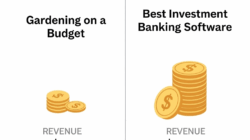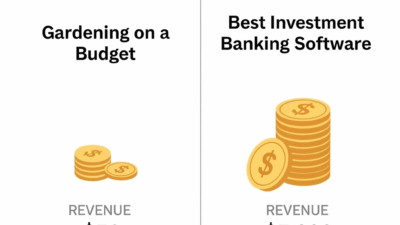For years, Blogger (formerly Blogspot) was a popular choice for beginner bloggers, thanks to its simplicity and Google integration. However, as content creators grow and seek more control, features, and design options, they begin searching for a Blogger alternative that offers better customization and monetization capabilities.
If you’re feeling limited by Blogspot, you’re not alone — and you have plenty of powerful options. Whether you’re looking to build a personal blog, monetize your traffic, or create a branded digital presence, switching to a more advanced blog publishing platform can unlock new levels of success.
Why You Might Need a Blogspot Alternative
Blogspot still has its strengths: it’s free, reliable, and integrates well with Google services. But its limitations are glaring:
- Outdated design templates
- Poor SEO flexibility
- Lack of plugin support
- Limited monetization options
- No absolute control over your hosting
If you’re serious about blogging as a brand, business, or revenue stream, it’s time to explore a more modern content management system (CMS).
WordPress.org: The Most Powerful Blogspot Alternative
Why WordPress.org Leads the Pack
When people talk about switching from Blogspot, WordPress.org is often the first destination. It’s a self-hosted platform that gives you complete control over your blog — from SEO to themes to plugins.
You’ll need your domain and hosting (services like Bluehost or SiteGround work well), but the upside is unmatched flexibility.
Focus Keyword Usage in WordPress Migration
If you’re searching for a Blogspot alternative that’s truly scalable, WordPress.org is ideal. It supports everything from simple blogs to full-scale eCommerce websites. With thousands of plugins, you can optimize for speed, SEO, security, and monetization.

Medium: A Clean, Writer-First Experience
Minimalism Meets Audience Growth
Medium is excellent if your priority is writing and audience discovery over design customization. It’s a publishing platform that allows writers to focus on storytelling, essays, and thought leadership.
It also offers built-in monetization through the Medium Partner Program, where you get paid based on reader engagement and reading time.
However, it’s less ideal for branding and SEO control. You’re building your presence on Medium’s domain, not your own.
Ghost: A Blogspot Alternative for Tech-Savvy Creators
Built for Speed, SEO, and Paid Subscriptions
Ghost is a modern, open-source blogging platform focused on speed and minimalist design. It’s an excellent choice for creators who want to launch premium content, newsletters, and memberships, especially with Ghost(Pro)’s managed hosting.
Ghost has built-in SEO features and performance optimizations. While it requires more technical familiarity than Blogspot, it’s beautiful for digital entrepreneurs.
Wix: Visual Blogging with No Coding Required
The Drag-and-Drop Revolution
If you’re looking for a Blogspot alternative that’s easy and visual, Wix is a strong contender. It offers no-code blog building, powerful customization options, and hundreds of templates.
Wix’s blogging engine includes SEO tools, an integrated app market, and eCommerce capabilities. While its blogging features aren’t as powerful as WordPress, the platform is perfect for design-first users who want everything in one place.
Squarespace: Blog Meets Brand Aesthetic
The Go-To for Visual Brands and Creatives
Squarespace combines blog publishing with beautiful, responsive design templates — especially for creatives like photographers, designers, and lifestyle bloggers.
It’s a great option if you want to go beyond blogging and build a full portfolio or business site. Like Wix, it’s all-in-one, but the user experience is more refined.
Focus Keyword in Visual Blogging Context
As a Blogspot alternative, Squarespace appeals to users who want blogging wrapped into a professional brand experience. It handles hosting, security, and design with ease.

Substack: Monetize Email-Based Blogging
Newsletters as a Primary Blog Format
If you’re looking to combine blogging with newsletters, Substack is a growing player. Writers can publish articles and send them directly to subscribers via email, and monetize with paid subscriptions.
Substack works well for niches like personal essays, curated insights, or industry analysis. It lacks design flexibility but shines in simplicity and recurring income potential.
Weebly: Simple and Budget-Friendly
Weebly, now owned by Square, is another website builder with integrated blogging features. It’s a suitable alternative to Blogspot for hobby bloggers or beginners who want a free or low-cost option with drag-and-drop editing.
It’s not as scalable as WordPress or Ghost, but it’s reliable, mobile-friendly, and user-friendly — perfect for starting.
Notion + Super: The Blog-From-Docs Trend
Lightweight Publishing for Digital Creators
With the rise of digital tools, some creators are now using Notion combined with Super.so or Potion to turn pages into minimal, fast-loading blogs. This setup is perfect for curating personal knowledge, digital journals, or resource hubs.
It’s not ideal for SEO-heavy blogging, but if you’re building a personal digital home, it might be the right fit.
Other Worthy Mentions
- Write, as – For minimalists who value privacy and simplicity
- Jekyll or Hugo – Static site generators for developers and advanced bloggers
- Tilda – Visual site builder with strong storytelling focus
Conclusion: Choose a Blogspot Alternative That Grows With You
Choosing the right alternative to Blogspot depends on your goals: Do you want creative control, better SEO tools, or monetization potential?
If you’re ready to invest in your blogging future, platforms like WordPress.org, Ghost, and Medium offer significantly more power and flexibility. For visual storytelling or personal branding, Wix and Squarespace provide sleek, all-in-one solutions.
Whatever you choose, moving beyond Blogspot is a smart step forward in building a blog that’s not only beautiful but built to grow.







